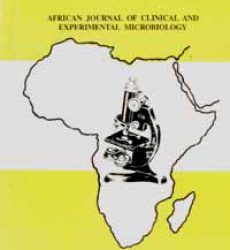Abstract
Background/Objectives: Pseudomonas and Klebsiella infections are important nosocomial infections because of the attendant significant morbidity, mortality and socio-economic impact. These infections are difficult to treat due to the innate and acquired resistance mediated by the organisms’ genome and other transferable genetic elements. We determined the multiple antibiotic resistance indices of Pseudomonas spp and Klebsiella spp isolated from clinical specimens in Lagos University Teaching Hospital.
Methods: 110 clinical isolates were evaluated using MicrobactTM 24E (Oxoid, UK) and Pseudomonas and Klebsiella species isolates were 34 and 21 respectively. The antimicrobial susceptibility patterns of the Pseudomonas and Klebsiella isolates were determined by Kirby-Bauer’s disc diffusion method and results interpreted by CLSI interpretative values. Multiple Antibiotic Resistance index (MAR) were calculated.
Results: MAR index of the Pseudomonas and Klebsiella samples was 0.4, as 31 (91.2%) and 14 (66.7%) of Pseudomonas spp and Klebsiella spp respectively were multi drug resistant. Isolates of Pseudomonas spp demonstrated the highest level of resistance to Ceftazidime (79.4%), Cefixime (76.5%), Cedipime (50%) and Piperacillin (44.1%); while that of Klebsiella spp were carbenicillin (76.4%), pipericillin (71.4%), cefixime (52.4%) and cefradoxil (42.9%) respectively. There was a low level
of resistance to quinolones and aminoglycosides.
Conclusion: The MAR index shows increase in the rates of resistance among these organisms thus making antimicrobial susceptibility surveillance and testing more crucial in selecting empiric regimen or definitive treatment.
KEY WORDS: Lagos, multiple antibiotic resistance (MAR), antimicrobial susceptibility, Pseudomonas and Klebsiella spp.
Download full journal in PDF below

